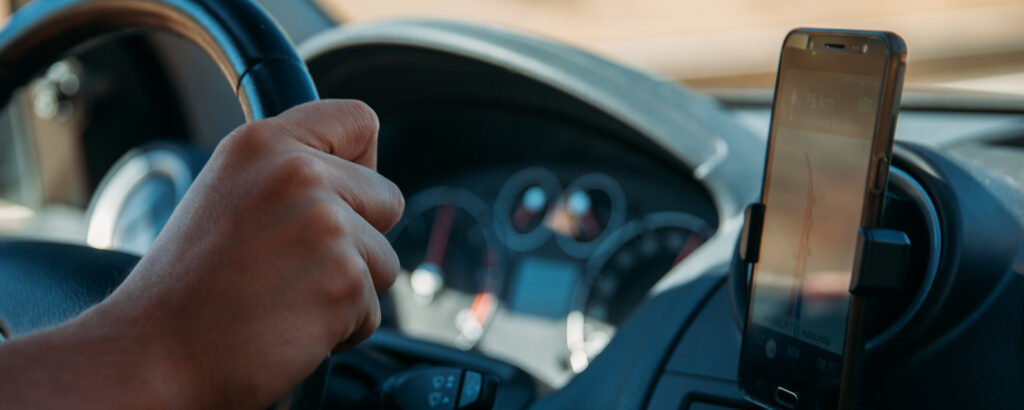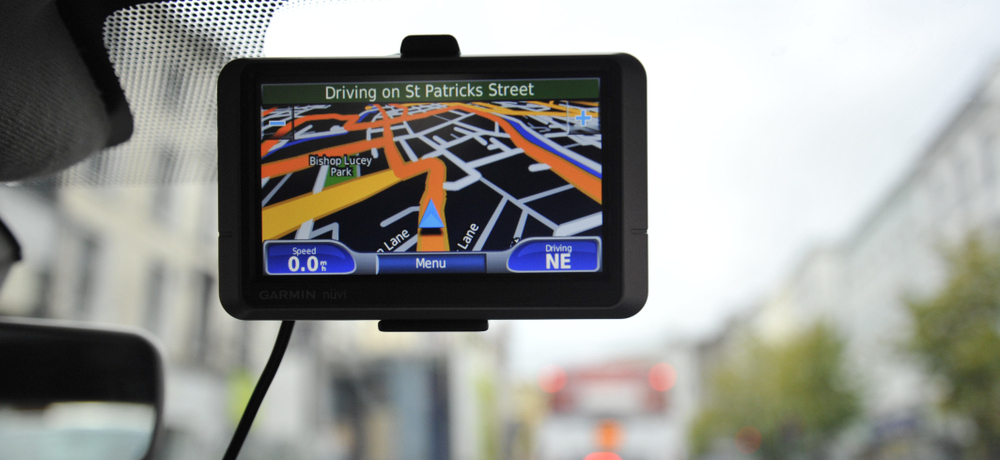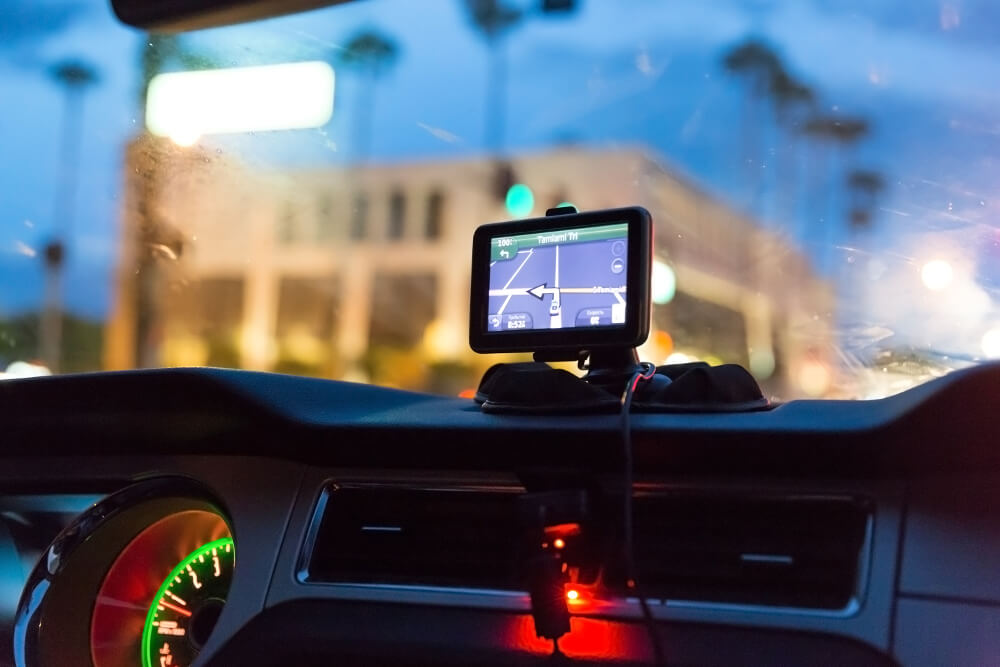Last Updated: APRIL 2021
Sat navs, cars and the law can often be a grey and confusing area. Particularly now that more than ever, people are opting to use their phones to navigate to their destination. This means there is added confusion with the strict mobile phone laws in place.
That’s why we’ve created this handy guide to help you make sure you’re following the law. You may even be surprised at what you didn’t know.
Is it legal to use your phone as a sat nav?
Yes, it’s legal to use your phone as a sat nav, as long as it has secure, hands-free access and it does not block your view of the road or traffic ahead. You can be prosecuted if the phone is touched whilst driving.

This means you can’t hold your phone and use it as a sat nav. It is illegal to touch and hold your phone while driving, when stopped at traffic lights, when queuing in traffic, or supervising a learner.
“Touching” your handheld devices covers anything from messaging, accepting phone calls, or selecting music from an app. The only time you can interact with your phone is when you are safely parked or in case of an emergency and you need to dial 999 or 112.
If you intend to use your phone legally as a sat nav, you must enter your destination before you set off. If you need to amend a route or touch your phone for any reason, you must pull over and park to do so. The phone must meet the satisfactory standards for being ‘hands-free’, i.e. being securely mounted to a dashboard holder, mat or a windscreen mount.
According to the UK laws, hands-free access can include Bluetooth headsets, voice command features, a built-in sat nav app, or a safely mounted device.
Despite all of this, the police have the power to prosecute you if they believe you are distracted and not in full control of your vehicle, even if your phone is securely mounted and untouched.
Where should you legally mount your sat nav?
The Highway Code states that windscreens should be clear of all obstruction. However, there is no set law on where you must place your sat nav when driving.

Essentially, when mounting your sat nav, make sure it does not block or interfere with your view of the road ahead. As mentioned previously, if the police feel your sat nav placement is causing you to:
- be distracted
- not be in complete control of your vehicle
- not have a full view of the road
…they have the power to prosecute you.
Can you touch a mounted phone or sat nav while driving?
The UK laws strictly prohibit drivers from touching their phones whilst driving. Originally, a loophole in the law allowed drivers to use mobile phones to take photos. This is now being rectified under the new law and will be strictly prohibited.
According to rule 147 of the Highway Code, drivers must exercise full control of their vehicle. If a device is capable of distracting your focus away from the road, you will be at risk of a costly fine, especially if you’re found guilty of reckless driving.
Therefore, it’s advisable to pull your car safely to a stop and away from traffic before programming your route into either a sat nav or handheld device. As the registered driver and owner of a vehicle, you are responsible for safe and legal road use.
A sat nav is a helpful driving tool when it comes to understanding routes, especially if you’re travelling along unfamiliar roads. Importantly, satellite navigation shouldn’t be relied upon entirely, as drivers are advised to research and anticipate their routes in advance.
How to use a sat nav safely and legally
If you’re driving on unfamiliar routes, or travelling to a new destination, you may consider using a sat nav. But, before setting off on your journey, consider the following:
- Check your planned route with the sat nav before driving, carefully checking for any destination errors or unsuitable roads. If you’re driving a larger vehicle, such as a van, you will need to think about any height and width restrictions as a sat nav won’t anticipate these issues.
- Ensure voice commands are active, as spoken instructions will free your focus to remain on the road, rather looking at the screen for directions.
- Try to make sure your sat nav is using reliable, accurate mapping. This means keeping your device updated regularly. Destination errors can increase distractions.
What happens if you are caught using your sat nav illegally?
Using your phone whilst driving is considered a prosecutable offense, especially if your driving is found to be impaired as a result of a device distracting your attention away from the road. This rule can be enforced even if you’re not holding device, but are found to be sufficiently distracted by one, such as a sat nav.
According to the UK government, if you’re caught using your phone illegally while driving, you will get 6 penalty points on your licence as well as a £200 fine. If you passed your driving test within the last 2 years and are caught using your phone while driving you will instantly lose your licence. Depending on the situation, you could also be banned from driving and get a maximum fine of £1000.
If you’re stopped when using a sat nav or phone as a sat nav and you don’t have a full view of the road ahead, you could be fined up to £1000 or get 3 penalty points on your licence.
In summary
To avoid penalty points and fines, make sure your sat nav or phone is securely mounted so that is hands free. Make sure it doesn’t impair your view of the road, and make sure you do not touch the device unless you are parked.
If you have received penalty points on your licence from using your mobile phone or sat nav incorrectly, speak to Keith Michaels. We specialise in competitive insurance to those with penalty points and convictions and treat each customer as an individual.


